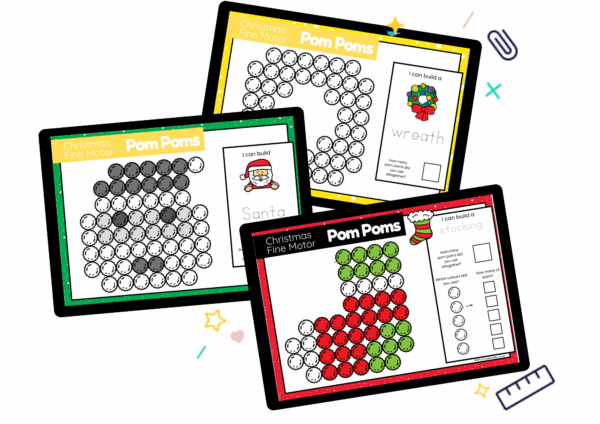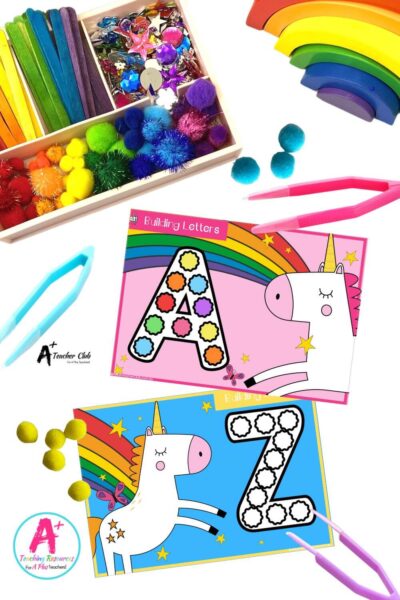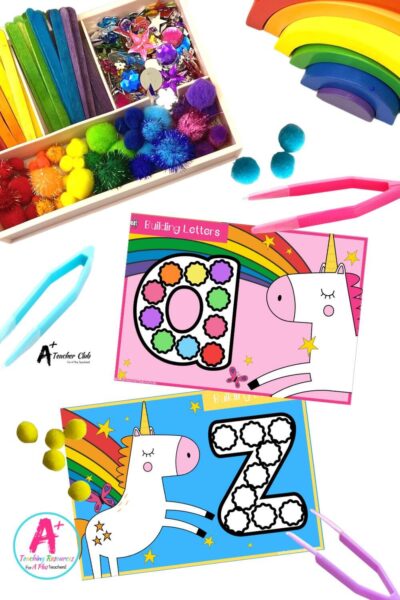PomPom Alphabet Activities – Hands-On Fine Motor Phonics Fun
Fine Motor Resources
Looking for a meaningful way to support letter recognition and phonics in your early years classroom? PomPom alphabet activities offer a hands-on, playful approach that builds essential literacy skills while strengthening fine motor control. With just a set of coloured pompoms, tweezers, and printable letter mats, children can explore the alphabet in a fun, tactile way that supports phonics foundations and prepares little hands for writing.
Why Focus on Letter Recognition and Phonics?
Letter recognition and phonics are foundational to early reading success. Young learners need to not only identify letters by name but also associate them with their corresponding sounds. PomPom activities provide repeated, multisensory exposure to each letter, helping children:
- Recognise uppercase and lowercase letter shapes
- Say and hear letter sounds in isolation and in context
- Connect letters to familiar vocabulary and beginning sounds
- Build phonemic awareness through hands-on exploration
This approach strengthens the pathways needed for decoding and early reading while making learning feel like play.
How Do PomPom Activities Support Letter Learning?
PomPom alphabet activities offer a powerful blend of literacy and fine motor learning. As children place pompoms along each letter, they are:
- Tracing with purpose – following letter shapes with their fingers and eyes, reinforcing directionality and visual memory.
- Saying the sounds – repeating letter names and phonemes aloud, which supports phonological awareness and letter–sound mapping.
- Building grip strength – using tweezers or fingers to grasp pompoms encourages correct pencil grip and finger coordination.
- Learning through touch – tactile input helps anchor abstract letter knowledge in concrete experience.
- Growing confidence – repetition through fun builds familiarity and a sense of success.
These activities are particularly effective for kinaesthetic and visual learners who benefit from engaging with letters in more than one way.
What You’ll Need to Get Started
Setting up a pompom alphabet activity is simple and low-prep. All you need is:
- Printable alphabet mats – showing uppercase, lowercase, or both (Download Below)
- Coloured pompoms – assorted sizes add interest and fine motor challenge
- Child-friendly tweezers or tongs – to strengthen finger muscles and control
- Beginning sound picture cards – for added phonics connection (Download Below)
- Plastic trays or placemats – to keep work areas tidy
These materials can be used in literacy centres, small group lessons, or independent work tubs.
Classroom Tips for Success
To get the most from your pompom alphabet activities, consider the following teaching tips:
- Focus on one letter per day or week to allow for deep exploration
- Pair the activity with songs, rhymes, or chants to reinforce sound recognition
- Encourage students to say the letter name and sound as they work
- Add visual aids like anchor charts or sound walls for support
- Rotate in seasonal or theme-based mats to keep engagement high
- Invite children to trace or write the letter after placing the pompoms for added practice
This type of learning fits beautifully into phonics rotations, morning tasks, and targeted intervention sessions.
What to Look for in Student Progress
PomPom alphabet activities offer valuable insight into both literacy and motor development. As children engage regularly, look for signs of growth such as:
- Correct identification of letter names and sounds
- Increased confidence in forming letter shapes
- Improved fine motor control when using tweezers
- Ability to match letters to beginning sound words
- Greater focus, independence, and task completion
Tracking this progress helps inform your planning and shows readiness for more formal reading and writing tasks.
Why Teachers Love These Activities
Teachers love using pompom alphabet activities because they:
- Make phonics practice fun, hands-on, and low-prep
- Support letter recognition and early sound awareness
- Build fine motor strength needed for writing
- Are flexible for whole-class, small group, or individual work
- Align with EYLF outcomes and the Australian Curriculum: Foundation – English
Whether you’re just introducing the alphabet or reinforcing existing skills, these activities provide meaningful, engaging practice that children enjoy.
Final Thoughts
PomPom alphabet activities are a simple, effective way to support early phonics and fine motor development in the classroom. They’re playful, purposeful, and packed with opportunities for learning through touch, movement, and sound. With consistent use, they help children build strong foundations for reading and writing—one pompom at a time.
Explore our printable Alphabet Mats A–Z and get started with a phonics station your students will look forward to every day.
Resources listed in this collection
Click to jump to...PomPom Alphabet Activities
Explore tags
More Pom Pom Fine Motor Activities

Fine Motor - Pom Poms - Christmas

Fine Motor Pom Poms - Numbers 0-30
Can't find what you're looking for?
Send us a request! Use this form to request a resource. Please give details of the learning area, topic, year level, curriculum links. We’ll be happy to take a look to see if we can fit it in. Unfortunately a request does not guarantee we will be able to make it!
"*" indicates required fields



